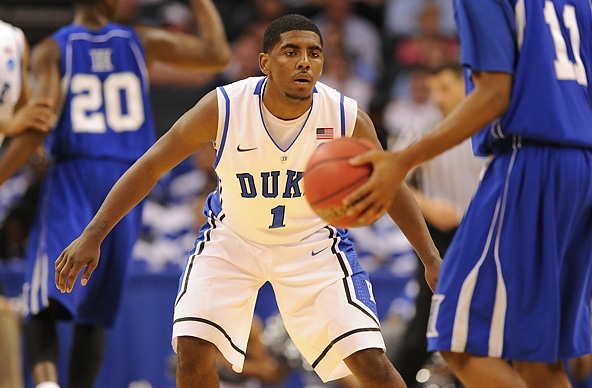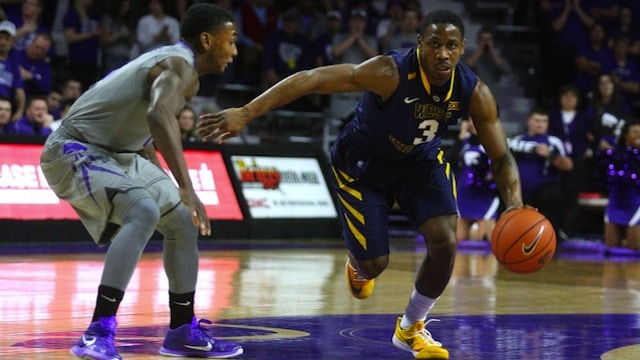
This article is a must-read for basketball coaches and will cover a wide range of topics when it comes to defense in basketball. With all of these tips and instruction, you can make sure that you are ready to get your team to the next level when it comes to playing defense.
Foundations of Team Defense in Basketball
Ben Thompson contributed to this portion of the article.
In basketball coaching, we hear the term “foundation” a lot. We know what foundation means, but it is often just a word, not something we embrace. Webster’s defines a foundation as the basis or groundwork that anything stands on or is supported by.
In religion, we hear about pillars, cornerstones, and tenants. These are all building blocks of what people believe. My question for you is, what do you believe, and what is your defensive foundation?
For this defensive basketball coaching article, I will give you my personal beliefs about building your team basketball defense. Many of you may feel the same way, or you may have your own thoughts.
We all know that different words have different meanings. However, numbers do as well. For instance, the number seven means perfection or completion. In my mind, a perfect or a complete team defense in basketball has seven elements.
- Communication
- Stance
- Ball Pressure/Fronting in the Post
- Help & Helping in a Stance
- Protect the Paint
- Closeout and Contest
- Block Out
Defensive Communication
These elements are in a specific order. I believe that everything starts with communication. You can do everything right on the defensive end of the floor, but if you do not communicate, there is very little chance of success.
Defensive Stance
Proper stances and stance work are lost in today’s game. We often see players standing straight up or not being in a proper stance to play the game. Basketball is played low to high; low man always has the advantage.
Ball Pressure
Ball Pressure is key. I’ve worked for several coaches, but one had a quote that stated, “the ball can’t make a pass, and it can’t see.” He is right. If you are pressuring the ball/tracing, an offensive player becomes uncomfortable and may even turn their back to the play. When this occurs, the offense stymies. Ball Pressure is also a big key to defending the post. If you have ball pressure, good backside help, and a post player that works to front, you can defend the post more effectively.
Help Defense in Basketball
We all talk about help defense, but helping in a stance gives you a greater chance of success. If you are low and ready, you can help cut off the attacking offensive player and recover to your man.
Protecting the Paint
Protecting the paint is crucial to basketball team defense. It is the “NO FLY ZONE.” Protecting the paint has to be a focal point of your defense. Once the ball gets to the paint, breakdowns occur easier, and your defense is in scramble mode.
Closeout and Contest
Too many players fly at the ball on closeouts. To be a really good defensive team, your players have to buy-in to closing out with a hand above the ball and being on balance.
Block Out
Finish the possession. There are several ways to teach blocking out; many are effective. However, rebounding the basketball is an effort part of the game. If your team is more determined to block out than the offense is to crashing the boards, you win the battle. Every rebound is a 50/50 ball. Usually, the ones who want it the most are the ones who get it.
Foundations of Team Defense in Basketball
These are my seven foundations of team basketball defense and what I believe make a complete and perfect defense. The strategy will change on how you guard different actions and the amount of pressure you apply, but with these seven principles, you can set your team up to be a great defense.
Along with focusing on these seven defensive basketball principles, make sure you take advantage of the listed basketball drills in this article. They will help you rep out these different keys and allow your team to work on these different defensive areas.
The Ultimate Basketball Team Defense
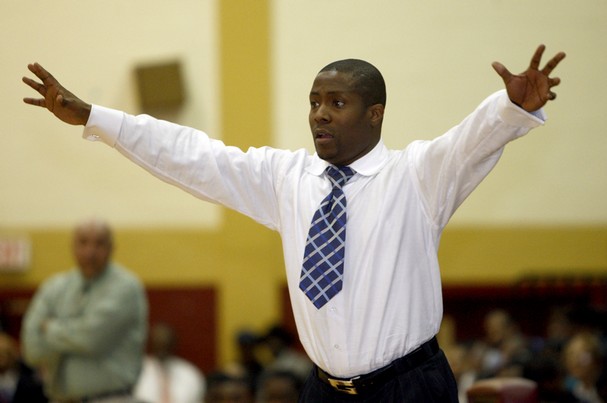
Jermaine Johnson contributed to this portion of the article.
Basketball Team Defense Introduction
Over the past several years, our basketball program has begun to notice that most offensive actions include only two or three offensive players in any play. However, we believe that five committed defensive players can consistently beat two or three offensive players if they are willing to work together as a team.
The second major concept of our philosophy as a team is to take all the guesswork out of our defense. We dictate where we will allow the offense to go and then try to take the offensive movement away.
Third, we work at being in better condition than our opponents. Our players are made to believe that they are in better shape, both mentally and physically, than our opponents.
Fourth, defense starts on offense. Our players will not be careless ball handlers on offense, and we will do an adequate job defending against any stolen pass.
In this defensive basketball article, I will share some keys to a great team defense with you, which will hopefully help you improve your team’s defense! Here are the four areas that will be covered.
- Defensive Philosophy
- Defensive Goals
- Rules for Defense
- Implementing a Defensive System in Practice
Defensive Basketball Philosophy
I am a firm believer that defense truly puts your team in a position to win games and eventually championships. From your defense, you can do several positive things, such as:
- Teamwork—everyone must do his job
- Create offense from your defense
- Make every offense trip a tough trip
- Every player must give 100% effort ALL of the time
Defensive Basketball Must-Haves
- 1. 5 ON DEFENSE VS THE BALL
- 2. PLAY THE BALL AND SEE YOUR MAN
- 3. CONSTANT BALL PRESSURE (PRESSURE/FORCE/CONTAIN)
- 4. PACK IT IN TO PREVENT PENETRATING DRIVES, CUTTERS, PASSES, AND REBOUNDING
- 5. FORCE EVERYTHING BELOW THE FOUL LINE TO THE MIDDLE
- 6. FORCE EVERYTHING ABOVE THE FOUL LINE TO THE OUTSIDE
- 7. MOVE AS THE BALL MOVES. ROTATE IN ALL HELP SITUATIONS
- 8. SHRINK TO THE BALL MENTALITY (ON THE FLOOR OR ON THE GROUND)
- 9. ALL DEFENSIVE STOPS END WITH A DEFENSIVE REBOUND
Defensive Basketball Goals
Your goals are measuring tools to help motivate your team. The team should always be striving to reach the team’s defensive goals. These goals should be adjustable as the season progresses. The goals must also be adjusted per the game plan that will be implemented for each game.
Your defensive goals should be visible for the team to see. Coaches should chart the goals as statistics and talk about them at the right moments during a game or practice.
Example of Team Defensive Basketball Goals:
- 1. Hold opponents to 50 points or less
- 2. Hold opponents to 40% or less from 2pt fg%
- 3. Hold opponents to 30% or less from 3 pt. fg%
- 4. Limit opponents Free Throw attempts to 10 or less per game
- 5. Avg. 25-30 Deflections per game
- 6. Avg. 8-10 Steals per game
- 7. Take 6 charges per game
- 8. NO TRANSITION BASKETS
- 9. Hold opponents to 20 dribble paint touches per game
- 10. Out Rebound and commit fewer fouls than the other team
Defensive Basketball Rules
The first principle in teaching this defense is to Divide the court into HELP-SIDE AND BALL SIDE:
Ball Side Rules
- Always keep pressure on the ball
- Make it tough to make a penetrating pass
- Help and rotate
- When your man passes the ball, jump to the ball
Help-Side Rules
- The further your man is from the ball, the further you play from your man
- When your man is above the foul line, you are one step off the line of your man and the ball and one step to the man side
- Front every cutter going to the basket
The second principle is to divide the court into post responsibilities and guard responsibilities: Basically, this is why we switch the guard to forward cross. We always want big men where they are more effective. They are better basketball rebounders, better defensively under the basket, and better at defending the forward and post area.
On the other hand, the guards/wings do a better job defending out away from the basket, and they cover more area quicker. We only switch on crosses or when the post players are close enough to switch effectively verbally.
Defensive Basketball Drills to Teach
Playing Angry Defensive Basketball Series
- Post defense
- Gap position
- High hip closeouts
- One on one sideline alleys
Disadvantage Basketball Drills
All of these basketball drills will teach your players to compete and battle. This is important because not every defensive possession goes as planned, and players must figure it out and still get a stop.
- One offensive player vs. two defenders (working on trapping)
- Four offensive players vs. three defenders (working on rotations)
- Five offensive players vs. four defenders
- Six offensive players vs. five defenders
Closeout Basketball Drills – John Cheney Series:
- Basic slides.
- High/Low cross closeouts
- High/Low cross closeouts with a dribble
- High/Low cross closeouts with post feed
In all of these basketball drills, we are working on:
- Communication
- Sprinting to the ball
- Rotations-Drawing the charge
- Building swagger and trust in our team defense
Recommended: Defensive Basketball Drills
Implementing a Defensive System in Practice:
- I teach using the WHOLE/PART/WHOLE Method
- Practices are broken down into 8-10 minute blocks
- I use the station format as often as I can, depending on the number of assistant coaches at practice
The Ultimate Basketball Team Defense Conclusion
Must have pressure on the man with the ball. The first consideration of every player is to stop the ball with gap protection and rotation principle. Each player must feel a deep responsibility to do everything possible to keep the other team from scoring. This is the team basketball defense principle. The return will come in the form of more wins and DEFINITELY championships. DEFEND TO WIN!
Defense in Basketball Should be Exciting
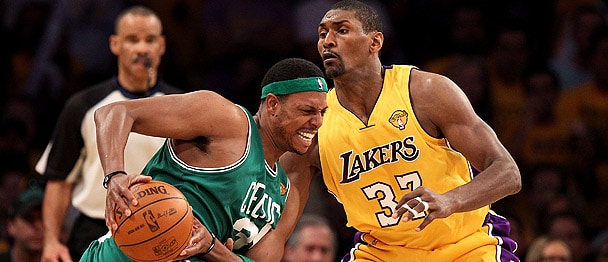
Why do the majority of basketball players dislike defensive basketball drills or playing defense? Is it too hard, boring, not fun, etc.? The reason is not because it is too difficult or too boring; it is because of the players’ mindset.
When a player hears “time to practice defense,” he immediately assumes the worst because his mind has been conditioned over the years not to enjoy defense. As a basketball coach, it is crucial to try and break this idea of defense being negative in the player’s mind. If you can start to change this mindset and create a culture of defensive pride, you will start to see something special happen within your basketball program. Here are some great ways to develop this type of defensive mindset within your program.
Defensive Basketball Pride
For a team to be good at defense, they need to enjoy it and want to practice it. There needs to be a sense of pride in each player’s defense. It is the coach’s job to change the negative mindset and replace it with a positive one. Defense in basketball should be exciting because it is a chance for your team to win games and potentially championships! It is a chance for a player who struggles on offense to get more playing time by playing great defense. These are all things that a coach needs to be preaching daily.
How do you begin to change the mindset of the team, though? For the players to buy into this concept, the coach needs to especially work on the best players. These are the team leaders, and if they begin to enjoy defense, then the rest of the team will follow. Don’t allow your best players to slack off on defense just because they can score points on the other end; hold them accountable, and the rest of the team will follow.
Positive Reinforcement
The coach needs to make a conscious effort to reward good defensive plays like charges, deflections, high hands, etc. This is how you let your players know what you value. It is important that you create a standard of what you are looking for and then reinforce your expectations. Whether it is doing basketball drills that focus on defense in practice or playing defense in a game, you need to be reinforcing what you expect from your players. Be careful not to promote bad habits, though, like reaching for steals or trying to block every shot. This will get your players in foul trouble and usually leads to easy baskets for the other team.
Basketball Team Defense
Basketball coaches should stress that it is just as important to lock your man down on defense as it is to score on him. There should be a team concept where each player is willing to help their teammate if they are beaten and need help.
People always talk about ball hogs and how different players are selfish on the offensive end of the court. However, many people don’t realize that a player can be just as selfish on defense. Players that don’t communicate, aren’t in the help, don’t rotate, etc., are either willingly or unwillingly defensively selfish. As a coach, you must constantly be preaching help defense and being there for a teammate. No defender should feel like they are on an island defensively.
For a defender to guard to the best of his ability, he/she needs to know that there is help behind them, and the helper needs to know that there is help behind them. This is a fun style of defense if you can get your players to buy into the idea of being unselfish and selling out for each other.
Defensive Excitement
It is the coach’s job to generate excitement around the concept of defense. There are many different styles and philosophies about defense. Still, whether it is a man-to-man defense, a 2-3 zone defense, or a full-court press, players need to be excited about defense to have a truly great defense in basketball. It all starts with the mindset.
4 Characteristics of Great Defensive Basketball Teams
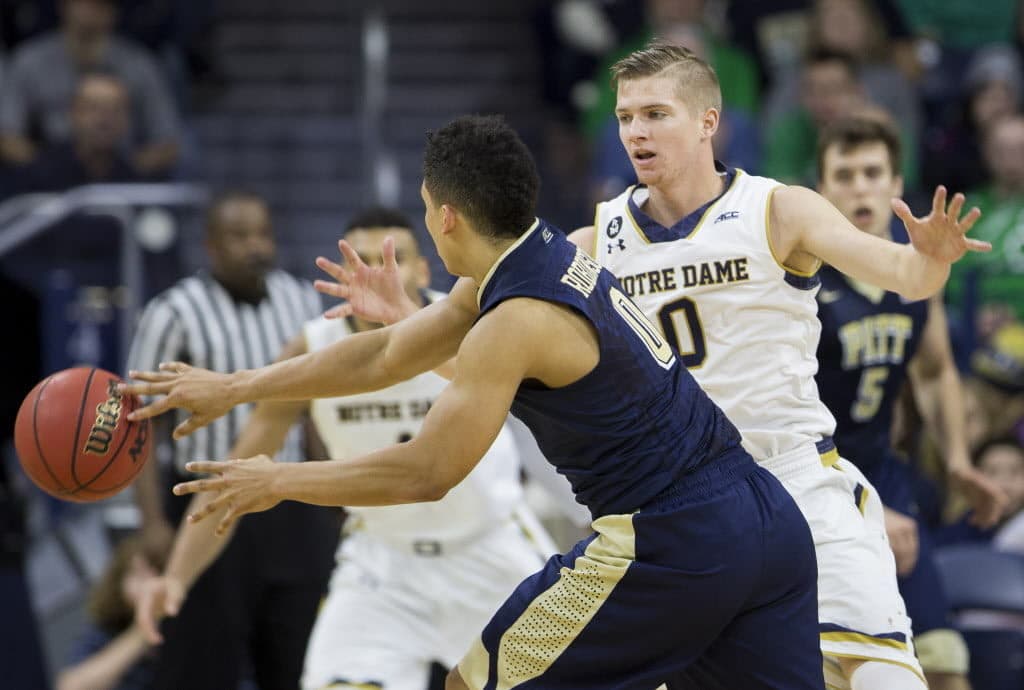
Billy Begley contributed to this portion of the article.
“Defense wins championships!” That is the old saying that has been around sports for years and years! Some would argue that the old saying is true, while others believe the point of a game is to score more points than the other team. I would agree that it is a combination of both.
There must be a balance of good offense and defense in basketball for any championship team. You must be able to put points on the board and have a player or two that can go get a bucket or make a play for someone else when all else breaks down.
However, if a team wants to develop any consistency and give itself a shot at winning any game on any given night in any gym, it all starts with getting stops!
I think we can all agree that the 2016-17 Golden State Warriors were one of the most dynamic offenses the league has ever seen! Having three of the best shooters on the planet, with one of those being one of the most unique players and scorers this game has ever seen in Kevin Durant, along with their ability to share the ball and hit you from all different angles makes them very tough, if not impossible at times, to guard.
But every one of their offensive runs began with a string of defensive stops. Golden State could get out in transition and score in disadvantaged situations with 3-on-2 and 4-on-3 fast breaks.
What was once a 5-point lead quickly turned into an 8, 10, 15, 20 point lead. Game over! But it all started with getting stops on the defensive end. It is hard getting out in transition and scoring, and when you are taking the ball out of bounds every time. The best and most consistent teams in basketball understand that it all starts with defense.
As a basketball player at Mississippi State, I was able to be a part of one SEC regular-season championship team, two SEC West championship teams, and four NCAA Tournament teams. During those years, we were consistently one of the best defensive basketball teams in the league.
My freshman year (2003-2004) was the year we won the overall SEC regular-season championship. We were not loaded with talent or a ton of one-and-done players either. Only one player (Lawrence Roberts) was even drafted from that team! But we bolstered a 14-2 overall league record while going 8-0 on the road! How did we do it? Defense!!
We gave ourselves a chance to win every game because of our team’s defense. An offense is unpredictable; you can’t control how many times the ball goes through the hoop. But defense travels to every game and every gym. This does not mean you will win every game, but being a great defensive team will give you a chance almost every time you step on the floor.
Here are 4 Characteristics that Every Great Basketball Defensive Team Has
Defensive Toughness
I know this seems generic or cliche’, but it is simple! Every great defensive basketball team has a certain “dog” about them! They take great pride in their ability to defend. Defense in basketball starts with an attitude! If you do not have the “dog” in you, it is hard to be a great defensive team.
And what do I mean by toughness? Stepping over from the help side and taking a charge or being the first on the floor when there is a loose ball. Those are winning plays that take ZERO talent! It simply comes down to making a choice and having the toughness to do it.
Defensive Accountability
I am not talking about accountability from coaches. I am talking about must-have accountability from teammates. It is one thing if the coach calls you out for not fulfilling your defensive assignment, but it is an entirely different feeling when your teammates call you out!
Player accountability was one of the greatest attributes of that 2004 SEC Championship team. Accountability did not come from just the coaches; it came from the huddle. No one wanted to be the guy that let the other four down on the defensive end.
No one wanted to be “that guy” who could not guard their man, missed a block out, or failed to rotate quick enough in the help side that led us to get dunked on. Accountability came from within, and when someone was not holding their defensive effort up to the group’s standards, the other four guys called him out.
Having this accountability and pride on the defensive end must start with the players in uniform, not the coaches in suits.
Defensive Communication
The best defensive teams in basketball are also the best at communication. Transition defense has to start with communication from all five players sprinting back. In the half-court, defending any screen, hard cut, or any other action that the offense runs all starts with a high level of communication.
The ability to communicate at a high level is a must for any basketball team that wants a lockdown defensive. It takes ZERO talent to talk!
The ability to communicate can also sometimes hide the deficiencies one may lack in height and athleticism! Communication keeps everyone on the same page and working together for the common goal of getting a stop.
Defensive Rebounding
A basketball team cannot be a great defensive team without being a great rebounding team. A defensive possession is not over until the team gets a rebound. It is demoralizing as a team when you defend your tail off and force the other team into a bad or rushed shot but fail to come up with the defensive board.
It’s just as demoralizing to the other team when you limit them to one shot. Being a great rebounding team can lead to easy baskets on the other end, which is a big reason why teams can string together monster runs and get big leads.
4 Characteristics of Great Defensive Basketball Teams Conclusion
Many other aspects go into great defensive basketball teams. However, without these four characteristics, it does not matter what kind of size or athleticism you have; it will be tough to be a great defensive team.
So Make sure that you are emphasizing the importance of toughness, player accountability, communication, and finishing the play every single day in practice. Make sure that your team knows what the program is about on the defensive end, and then work every day to make it happen.
10 Keys to Team Defense in Basketball
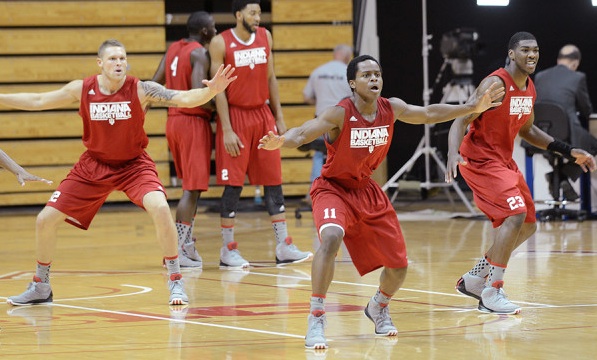
Team Defensive Key 1: Communication
- Communicate on Defense
- Talk through exchanges and offensive actions.
- Discourage the offense with loud communication.
- Stay engaged the entire play with communication.
- No Exceptions
- Be willing to communicate, regardless of position or personality.
- Communication is non-negotiable.
- Accountability
- Players 1-14 must be held to the same standard.
- Great communication needs to be rewarded.
- Relevant Communication
- Call out specific things that will help teammates out.
- Cutters
- Screens
- Being in the gap
- Being in the help
- Etc.
- Call out specific things that will help teammates out.
Team Defensive Key 2: Be on the Same Page
- Defensive Philosophy
- Everyone needs to be on the same page when it comes to your basketball team defense and guarding different actions.
- This will help to eliminate defensive breakdowns and confusion.
- Areas to Talk About
- Ball screens
- Guards: go under, switch, deny, fight through
- Posts: hard hedge, soft hedge, trap, switch
- Off ball screens
- Guards: chase, go under, switch
- Posts: show, sit back, switch
- Post defense
- Guard: dig down, double, stay home, lob help on the backside if it is a full front.
- Post: Sit behind, front, 3/4 front, 1/4 front.
- Ball screens
Team Defensive Key 3: Attention to the Details
- Active Hands
- Get hands in passing lanes and deflect the ball.
- Make the defense throw the ball over the top of the defense.
- This is essential for allowing the weak side defender to closeout on the catch.
- High Hands
- Closeout with high hands and contest every shot.
- Drastically lowers shooting percentage.
- Closeout with high hands and contest every shot.
- Closeouts
- Be there on the catch.
- Move to closeout as soon as the ball leaves the passer’s hands.
- Don’t leave early. If you do, it will open you up to pass fakes.
- Must be under control.
- Chop your feet and stay connected to the ground as much as possible.
- Cut Off the Drive
- Be in a position to slide and take away the drive without using your hands.
- No middle penetration. Aim the driver to the baseline.
- Be there on the catch.
- No Free Cuts
- Bump every cutter.
- NO FACE CUTS.
- See the ball and the man when guarding cutters.
- Post Position
- Don’t allow the offensive player to get a deep catch on the block.
- Fight for position before the ball is entered, and drive the offensive player further out to receive the catch.
Team Defensive Key 4: Stay Disciplined
- Don’t Gamble (Outside of Team Strategy)
- Stay in a defensive position.
- Don’t reach.
- Negatives of Gambling
- Unnecessary fouls.
- Easy offensive looks for the other team.
- Leaves teammates exposed.
- Builds distrust within the defense.
- Stance
- Stay in an athletic stance so that you can react quickly as the ball moves.
- Positioning
- When the ball moves, you move.
- Know where you should be and what you should be doing at all times.
Team Defensive Key 5: Finish the Play
- Rebound the Basketball
- Every player must do their job when the shot goes up.
- No second chance opportunities.
- Loose Balls
- Win 50/50 balls.
- First to the floor every time.
Resources: Basketball Rebounding Drills
Team Defensive Key 6: Energy Plays
- Charges
- Must be willing to step up and sacrifice your body for the team.
- Stay in an excellent help position, anticipate what the offense is doing, and then get set for the charge.
- Get on the Floor
- Your mindset needs to be first to the floor.
- Don’t be too cool to get dirty.
- Celebrate Energy Plays
- Run over and help your teammate up after they take a charge, dive for the ball, etc. GET EXCITED!!
Team Defensive Key 7: Compete
- Deal with Mistakes
- Fight through mistakes and get the job done regardless of what happened.
- Communicate at a high level to get through it.
- Emergency switch if needed.
- Fight for Stops
- Want it more than the offense.
- Make a play. Big-time players and big-time teams make a play when it is needed.
- No Plays Off
- Must compete on every play.
- Hold yourself accountable.
- Hold teammates accountable in a constructive way.
Resources: Basketball Competition Drills
Team Defensive Key 8: Protect the Paint
- Don’t Allow Paint Touches
- All five players must work together to keep the ball out of the paint.
- The player on the ball needs to trust that he/she has teammates helping them.
- Ball Pressure
- Pressure the ball without giving up penetration.
- Make it hard for the point guard to run the offense.
- Rotations
- Players in the gap must be ready to help if the ball handler gets an angle.
- Players in the help must help the helper.
- Everyone needs to be ready to rotate if needed.
- The entire team defense must work as one unit if there is a breakdown.
Team Defensive Key 9: Get Back in Transition
- No Easy Baskets
- Sprint back on defense.
- The First 3 steps need to be a full-on sprint, then get your head up.
- Don’t hang back with your man or stay at the level of the ball.
- Stop the ball.
- One player needs to be communicating that they are stopping the ball.
- Try to turn the ball handler 2-3 times.
- Communicate who you have.
- Point and talk.
- It doesn’t have to be your man, just match up.
- Sprint back on defense.
Team Defensive Key 10: Scouting Report
- Know What the Other Team is Trying to Do
- What are their strengths?
- Who is their best player?
- What actions do they like to run?
- Take Away what they do Best
- Don’t allow the offense to dictate what they want to do.
- Make them uncomfortable.
- Commit to your Game Plan
- Players need to be fully committed to the defensive game plan.
- Don’t try to do your own thing; trust the plan.
10 Keys to Team Defense in Basketball
Championship basketball teams play defense; it is as simple as that. There are great offensive basketball teams that can make runs, but if you cannot get big stops at the end of close games, your season will end shorter than you would like.
A high-level defense is not something that appears overnight either. It is something that takes time and must be built up and established daily. As a coach, you must be willing to do defensive basketball drills, hold players accountable, and preach defense regularly. You must be fully committed to the defensive process.
Regardless of what type of defense you play, these keys will apply to your team because they translate from scheme to scheme. There are ten keys listed above, but the one that blankets all of them is buy-in. Great defensive teams are bought into the system and do what it takes to play defense at a high level. It is not easy to build this defensive foundation, but if you stay committed to the process, it will be more than worth it in the end.
Principles of Transition Defense in Basketball
Alvin Brooks contributed to this portion of the article.
One of the most common phrases used in coaching is “get back!” However, when transitioning to defense after the other team gets a defensive rebound, your team scores, or there is a turnover, “getting back” and “sprinting back” have two completely different meanings.
I have been fortunate enough to be a part of coaching staffs that emphasize “sprinting back” so that we can “build a wall” and protect the paint, and in my time at Kansas State, I have been able to work with a few of the best defensive minds in the country.
I have outlined some of those principles below. After reading through these different transition defensive principles, though, it will be up to you to use basketball drills, small games, and 5 on 5 scenarios in your practices to make sure that your team is getting back in transition.
Transition Basketball Defensive Principles
Take good Shots
A bad shot is often the first pass in the other team’s fast break. Shots in the offense or within rhythm allow the defense to have the correct alignment when sprinting back. This is key for stopping the ball and getting matched up.
Communicate
Early, loud, and constant. At Kansas State, we emphasize that nothing has ever been accomplished without EFFECTIVE communication.
Sprint Back to the Paint
Guard the ball, not a man, in transition. Sprinting back to “your” man will cause you to lose sight of the ball and create gaps for the offensive to attack.
No Layups!
Self-explanatory! Limiting easy baskets increases the chance to win games. Great transition teams don’t allow easy baskets.
Force the Offense to Make 2+ Passes
This allows any trailing defenders to get back into the play. Trailing defenders still need to be busting it to get back into the play.
Force the Offense Into a Contested Outside Shot
Contested shots, especially outside the paint, diminish the likelihood of made shots. Match up and get a hand up on every shot.
Block out and Limit the Offense to Only One Shot
Multiple shots per possession can destroy morale, defensive confidence, and, more importantly, a season. Great transition teams in basketball finish the play by having everyone do their job on the glass.
Preparing for Late Game Defensive Situations in Basketball
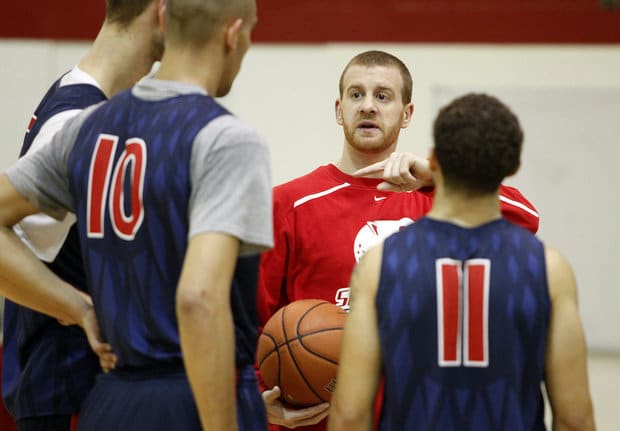
Russ Willemsen contributed to this portion of the article.
I wrote a basketball coaching article last season on the offensive side of preparing for late-game situations. In this article, I want to dissect the defensive side of the topic. This article is geared towards stimulating your thought process, and by no means am I stating this is the correct way to handle these situations.
My goal is to offer you things to think about while on defense in a late-game situation. I believe winning close games becomes the difference between having a good season and having a great season. I want to point out: if you decide to commit a foul, make sure your players know how to foul without it being called intentional.
1. Up 3: To Foul or Not to Foul? Statistics reveal there really is not much of a difference in a team deciding to foul or not to foul when up 3. I would advise that regardless of what you believe as a basketball coach, you make sure that you communicate your philosophy to your entire team and staff. Late in games is not the time to have a mental breakdown due to poor communication. If you decide to foul, your team needs to know the exact time at which to foul and make sure the foul is committed on the floor and not in the act of shooting.
2. Do you have fouls to give? If your team has a foul to give, at what point on the clock will you use it?
3. If the other team has to go the length of the court, do you have a man on the ball or not? This is always a tough question. You are giving the passer a free look to survey the court, but you could give your defense an additional defender to track the ball.
4. Do NOT get caught ball watching! How many times have you seen players watch the flight of the ball as another player catches and tips the ball to their man for an open shot, or they are screened in because they are caught off guard due to ball-watching? As a player, stay alert!
5. A coach must be aware of what the other team can do in reference to time and score.
- For instance: 1.3 seconds on the clock, the other team has time to catch, dribble, and shoot OR catch, pass, and shoot. They would not have enough time to catch, dribble, pass, and shoot. So if you are a help-side defender and the offensive player has initiated his dribble in this scenario, you could sell out and leave to help contest his shot if his defender is beaten.
6. Coming out of a timeout, think about changing to a 2-2-1 soft press. The other team may be thrown off, and it delays an additional 4-5 seconds off the clock.
7. Switch 1-5 ball screens with less than 8 seconds to play. Most teams do not practice working against a team that switches. Remember, mismatches will NOT beat you, but open shots will.
8. You must secure the rebound! All five players need to crash the glass in this case. This could be tied into ball watching, but many teams lose a game by not boxing out the final possession.
9. If your team has a zone defense and there are less than 8 seconds to play, you could switch to zone. Again this would confuse the offense.
10. Keep your man and the ball between you and the rim. I know it sounds simple, but take a look at this scenario: you are pressing late in the game and decide to face guard to apply more pressure getting the ball in. The offense flashes a post player, and the point guard (who was being face guarded) now gets the pass from the post (similar to Hook and Ladder in football), and now they have a numbered break versus your defense to win the game. If you decide to face guard late in the game, make sure the man guarding the ball is a safety (usually 10-15 feet inside half court) in case one of your defenders gets beat, the safety can now pick up the ball.
11. All players need to be level with the ball. Again this seems obvious, but consider this scenario: you decide to put a man on the ball in the full court. There are 5.3 seconds to go, and the ball is inbounded to the point guard. The point guard takes two hard dribbles up the sideline and crosses back over to the middle of the court. If the defender on the ball is still back near his man, he cannot provide help. If that defender sprints to the level of the ball, when the PG crosses back over, that defender can provide help on the basketball. You could be thinking: what if he throws back to the inbounder? That could happen, but now a post player has to handle the ball 65 feet from the basket and decide with less than 2 seconds to play. I will take my chances! A simple thought, but it could be the difference between winning and losing.
12. One last thing to consider, does the opposing team have any timeouts? If they come out of a timeout and call an additional timeout, would you change defenses? I think anything you can do as a coach to put confusion in the other team in late games more times than not will go in your favor.

